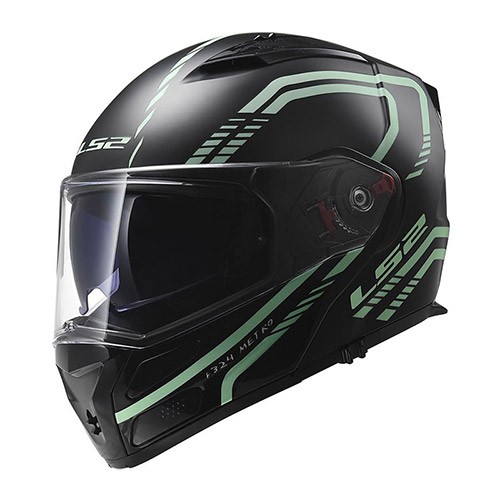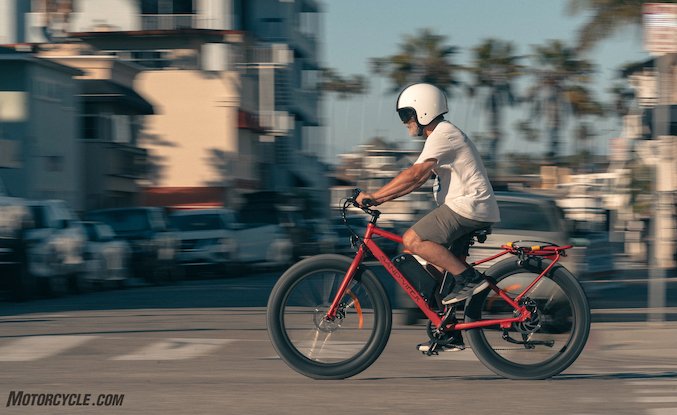
Like your Eskimos and snow, we here in California have 100 different words for sand. Regular sand. Powder sand, silt, chonky sand, fine sand, &, blowing sand, deep sand, you get the picture. The stuff’s all over the place, which makes sense as it’s a desert. So it’s nice to have a vehicle able to traverse it. Enter the SSR Sand Viper eMTN bike.
The fat tires aren’t just for fashion; this ebike can take you all kinds of places in comfort.
Editor Score: 79%
| Engine | 16/20 | Suspension | 10/15 | Transmission | 8.5/10 |
| Brakes | 8/10 | Instruments | 4/5 | Ergonomics | 8.5/10 |
| Appearance | 8/10 | Desirability | 8/10 | Value | 8/10 |
+ Highs
|
– Sighs
|
We don’t review ebikes much here at MO, but on special occasions (like when somebody offers one up), we’ll bend the rules. SSR Motorsports, just up the road in Santa Fe Springs, CA, has been importing all kinds of vehicles from China for 20 years now. The price has always been right, and in recent years, the quality of many of them has begun to rival the more expensive brands from other parts of the world too. The Sand Viper’s pretty swell, and retails for $1,999.
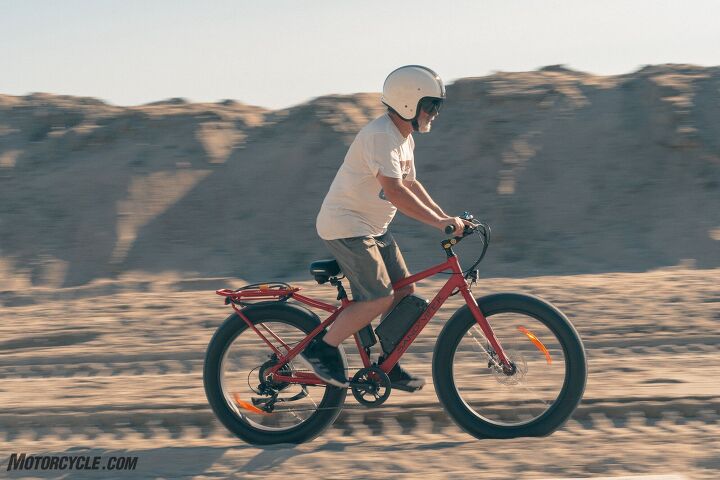
You can get going pretty good in compacted sand recently run over by a bulldozer.
Not to be confused with the earlier 350-watt version, the latest 500W Sand Viper is a 48-volt beastie that sprints up to 20 mph lickety-splitly enough. A little research informs us this is a Class II ebike, because you can get up to top whack by either pedaling or twisting the throttle that makes up the inner half of the right grip. You get there quickest by pedaling and twisting, but once you’re up to speed you don’t have to pedal at all to whiz along at 20. The throttle’s also really convenient when you want to keep pace with the cars leaving a red light, and even moreso when you’re trying to navigate through rutted bumpy churned-up sand.
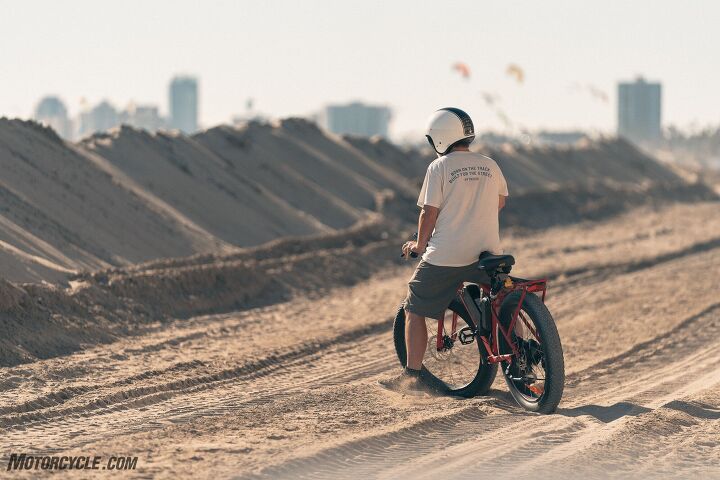
In sand, as a matter of fact, you’ve almost always got the throttle pinned to keep from bogging down, and usually in Assist level 5 of 5. Last time I did my 15-mile ride to the sea on a Yamaha Cross Core road bike, I had to push it through quite a bit of burning sand after I got to the beach to lock it up to a lifeguard tower, then I had to use my feet to hike down to the water. On the Sand Viper’s fat tires, though, you can just keep pedal-throttle scrabbling right to water’s edge. Which is nice.
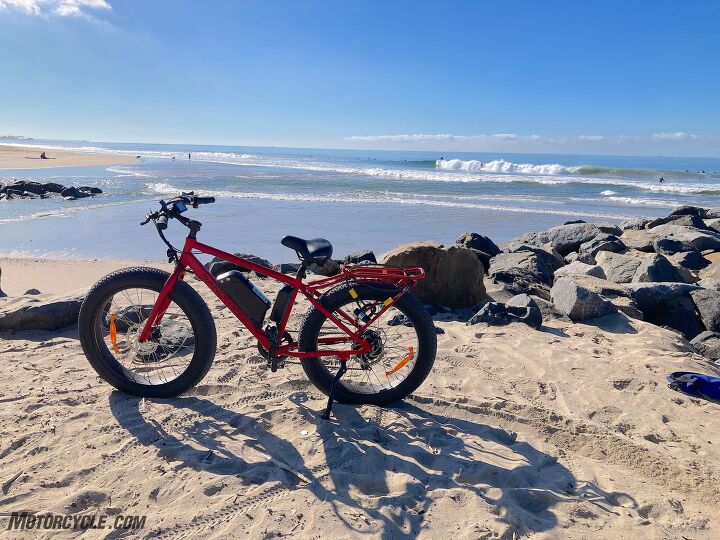
(JB cellphone pic)
What’s also nice is you could keep going along the water’s edge on the damp packed sand, which may be illegal but nobody really knows or seems to care as long as you’re not a jerk about it. Don’t try that on your Husqvarna in California.
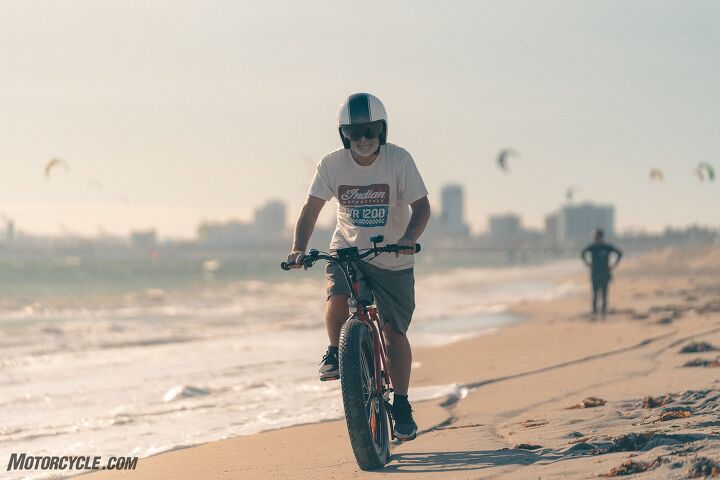
The 26×4 inch tires may look cartoony, but they work. Sort of. Just like on a motorcycle, some people squirt through sand easily, others have to work at it. Airing the tires down from 25 psi would’ve helped a lot, I found out later…
The magic’s in the brushless motor conveniently located inside the rear hub, back there with the seven-speed Shimano Acera S/S derailleur.
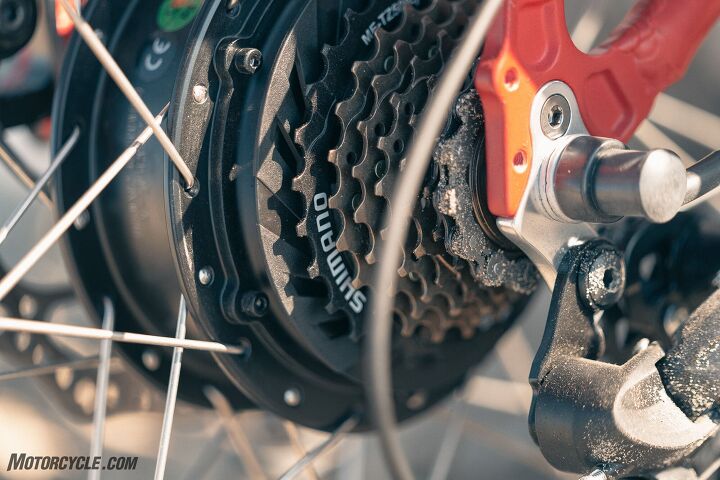
The left switchgear has your power button, and + and – buttons to shuffle through assist levels 1 through 5. Levels 1 and 2 are no-go for me, on this 53-pound bike (SSR’s claimed weight), just too much like work. The top three assist levels are sublime, though; they let you decide just what kind of heart rate you want to drum up. Mix and match your motor assist with the 7-speed gearbox, and you can find the right rhythm for any occasion.
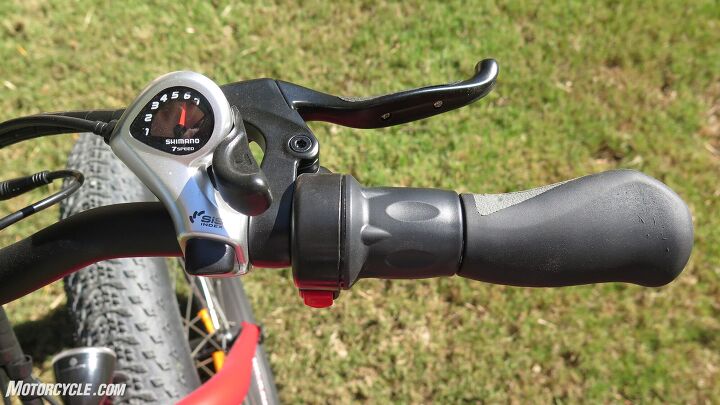
The throttle makes this a Class II ebike. You can disable it with the red button if you need to. Seven-speed Shimano derailleur clicks in the shift every time.
Unlike the more advanced cadence-measuring software found in the Yamaha and Harley-Davidson Serial 1 ebikes we’ve ridden, the SSR keeps track of your pedal speed via 12 magnets in a ring and a pickup mounted inboard of the front sprocket, like basic motorcycle ABS. It’s not as quick to pick up on when you’ve picked up the pace or slacked off, like sensing when you’ve come to a hill and are applying more pedal pressure. But it barely matters thanks to the hand throttle, a thing the Harley and Yamaha lack. SSR’s system has got to be way less expensive.
Home in on the Range
The specs say 25 miles, depending. I headed out Tuesday morning on my 30-mile round trip beach test route to get to the bottom of that. Running along the Santa Ana River bike trail near my house in California’s OC, my legs’ happy place wound up mostly being Assist level 4 and sixth gear, at an indicated 17 mph.
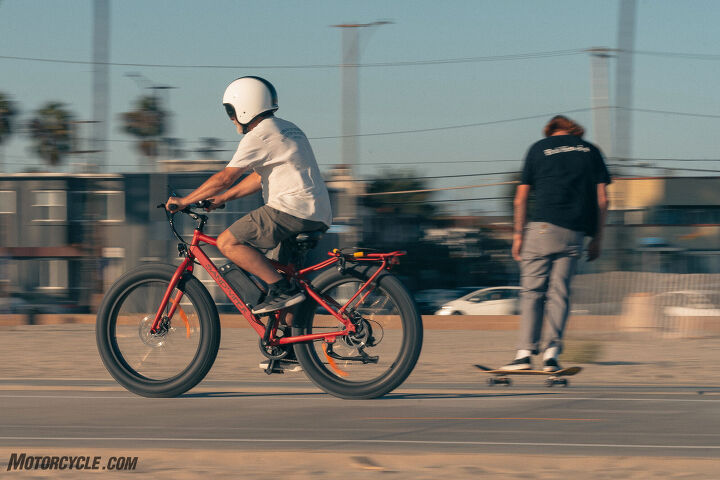
Dropping to level 3 would raise my heartbeat about 10 beats maybe and drop me to 16 mph, but who’s counting? Pumping the assist up to top level 5 and the trans to top cog, 7th, has you whizzing along at 21 indicated – pedaling easy and barely breaking a sweat.
Arriving at the mouth of the river 15 miles later, the battery indicator had not budged from four bars. Sweet.
The 15-mile downwind leg homeward was planned to be a fullblast level-5 rip the whole way to really test the battery, but not more than 2 or 3 miles after starting out, we’d lost one bar of power; a few miles later, with nine more to go, we were down to two bars and did not wish to have to dead-pedal this thing home – so I backed off to assist levels 3 and 4 in 6th gear to play it safe.
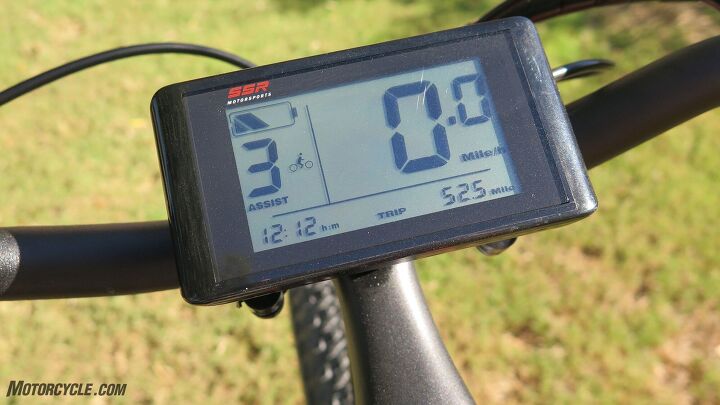
The Viper’s power indicator isn’t the most accurate thing in the world, as it wanders between bars a bit; at one point we were down to one bar. But by the time I reached home port after 30 miles, we were looking at two bars on the display.
Googling up the owner’s manual, we find:
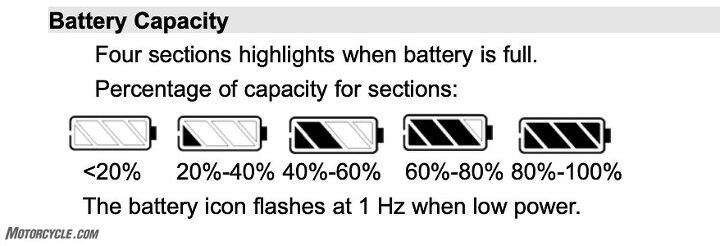
Ideally we’d have a way more accurate readout of remaining capacity, but it seems like my 30-mile ride used up only about half of the battery’s capacity, which, if accurate, means we’ve got over twice the 25-mile claimed range. (If you were riding those 25 miles in sand, that estimate would be much closer to accurate.) Like I said in my Yamaha Cross Core review, any ride longer than 30 miles, I’m taking a motorcycle or the bus. So for me, the Sand Viper has plenty.
Fat tires are not a joke
When I first started seeing these fat-tire bicycles, I thought they must just be a fashion totem for the surf/nose-ring community, but it turns out those 26 x 4 tires don’t just make it easy to ride through sand, wet grass, snow, etc. (if you’ve got assist, that is), they also serve up a way cushier ride than your typical road bicycle.
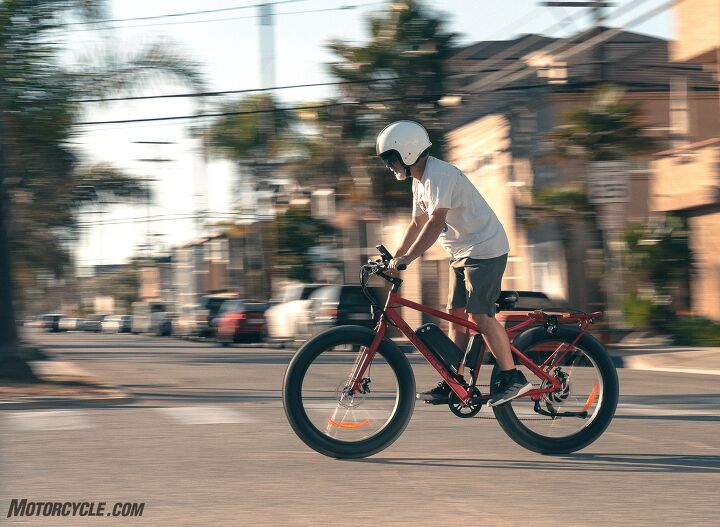
What’s really surprising is they don’t seem to have much more rolling resistance than the skinny 90 psi ones on your typical road bike. The sidewalls say 30 psi max inflation on my bike’s Kendas, but even at 25 psi, Strava recorded a 16.7 mph average speed for my ride to the beach – exactly the same average speed as on the skinny-tired Yamaha Cross Core ebike almost three years ago, over the exact same route.
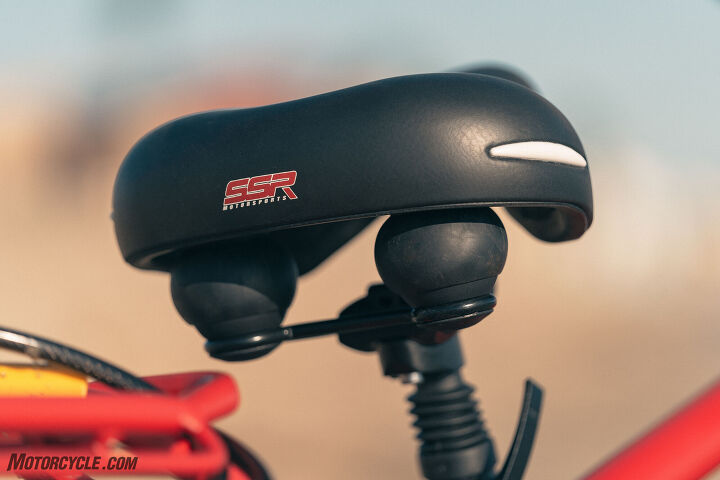
On the Yamaha, I had to wear padded bicycle shorts, assume the position, and endure the scowls of the clipped-in pedaling purists. On the Sand Viper, I’m just another perpetual sophomore sat reasonably upright on a cushy cruiser seat, which is even mounted to an adjustable shock absorber seat post. It’s no Cadillac, but the Viper’s much smoother-riding than any other bicycle I’ve ridden.
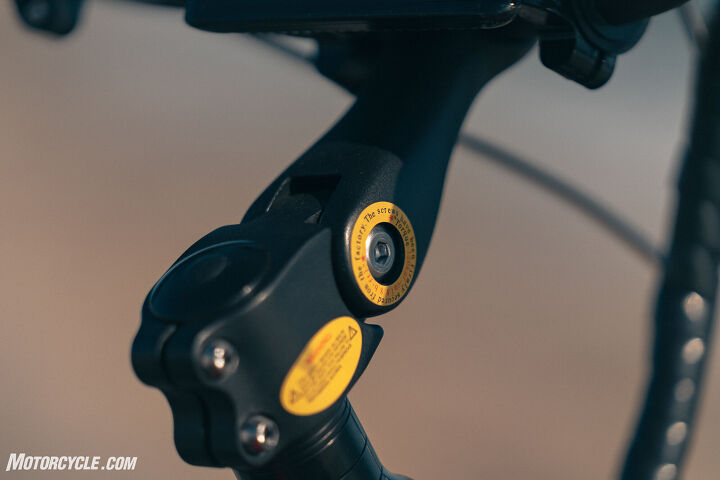
Also, though the aluminum frame only comes in an 18-inch size, the adjustable handlebar mount lets you rotate the bar into whatever position works for you.
Every time I ride the Viper, I feel like I’ve gotten just as good a workout as I did on the Yamaha, but my body also feels a lot less like it’s been punished. Which it likes.
Bells, whistles…
It does have a tiny bell to ding at your left thumb, but no whistle. There is a USB port on the side of the removable battery, too, and the headlight is also plumbed into the electrical system; the taillight, however, is not. When SSR stepped up to the 500W Sand Viper, they also added the bolt-on aluminum rear rack which is, of course, extremely handy for popping down to the shops. You could totally mount a plastic milk crate to it with hose clamps and/or zip ties.
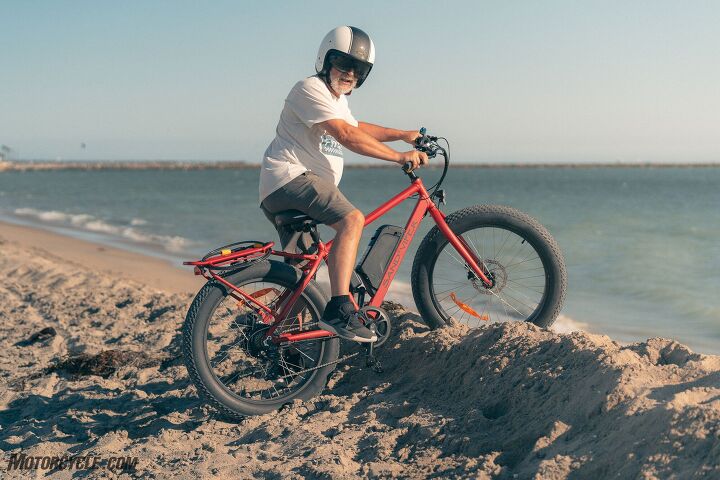
All the components, including the Shimano derailleur, the grips and levers, are all high quality. The front wheel is quick-release, the welds and lugs are all nicely done. The Sand Viper is a very nice piece of work.
Don’t be triggered
It’s not supposed to be a motorcycle or a bicycle, it’s somewhere in between. And it must be a pretty appealing niche, because there are about a thousand fat-tire ebikes like it on the market – the market being, among other people, lazy old chubby cheapskate Boomers like me who want a bit of a workout but not too much of one, and to have fun in the process. It’s nice to plug in a podcast or two and go for a spin, possibly stop in for a cold drink along the way. I think I’m only giving the Sand Viper back when SSR’s rumored electric scooter shows up.
| 2022 SSR Sand Viper Specifications | |
|---|---|
| MSRP | $1,999 |
| Engine Type | Brushless, rear hub motor |
| Bore and Stroke | 2 x size 9, 30-inch inseam |
| Compression Ratio | NA |
| Rear Wheel Horsepower | 500 watt; Samsung Lithium Ion, 48V 10.5Ah |
| Torque | Yes, 5 assist levels from Not Enough to Plenty |
| Transmission | 7-speed |
| Final Drive | Shimano Acera SS derailleur, KMC chain |
| Front Suspension | None |
| Rear Suspension | Cushy seat, adjustable shock-absorbing seatpost |
| Front Brake | 180mm disc, cable-actuated |
| Rear Brake | 180mm disc, cable-actuated |
| Tires | 26 x 4-inch Kenda, tube-type |
| Rake/Trail | Yes |
| Wheelbase | 46.5 in. |
| Seat Height | Minimum 36.5 in. |
| Curb Weight (Claimed) | 53 lbs. |
| Range | at least 50 miles on pavement, less in sand (MO tested) |
| Colors | Black, white, red |
| Warranty | 12 months limited warranty |
We are committed to finding, researching, and recommending the best products. We earn commissions from purchases you make using the retail links in our product reviews. Learn more about how this works.
Become a Motorcycle.com insider. Get the latest motorcycle news first by subscribing to our newsletter here.
